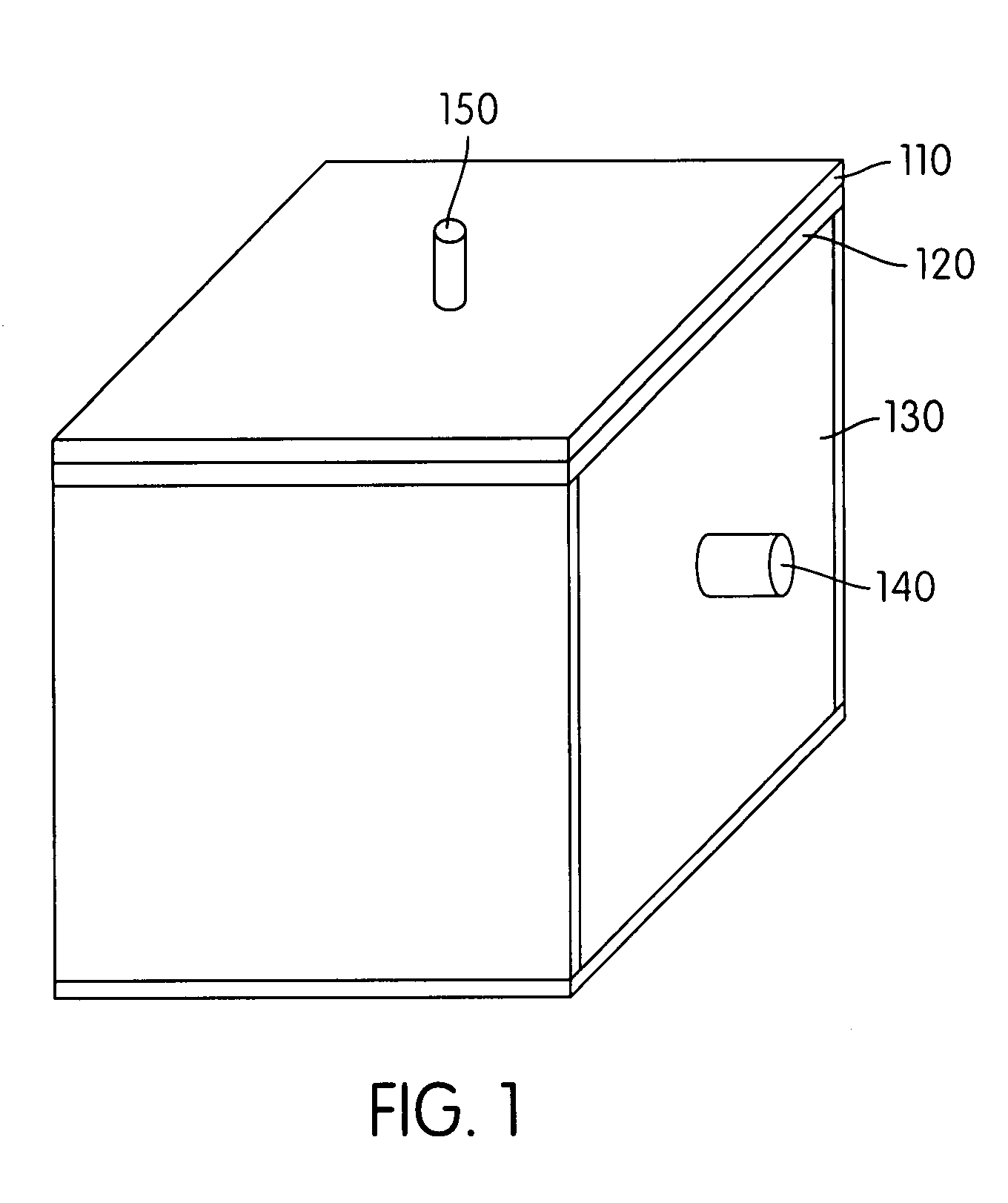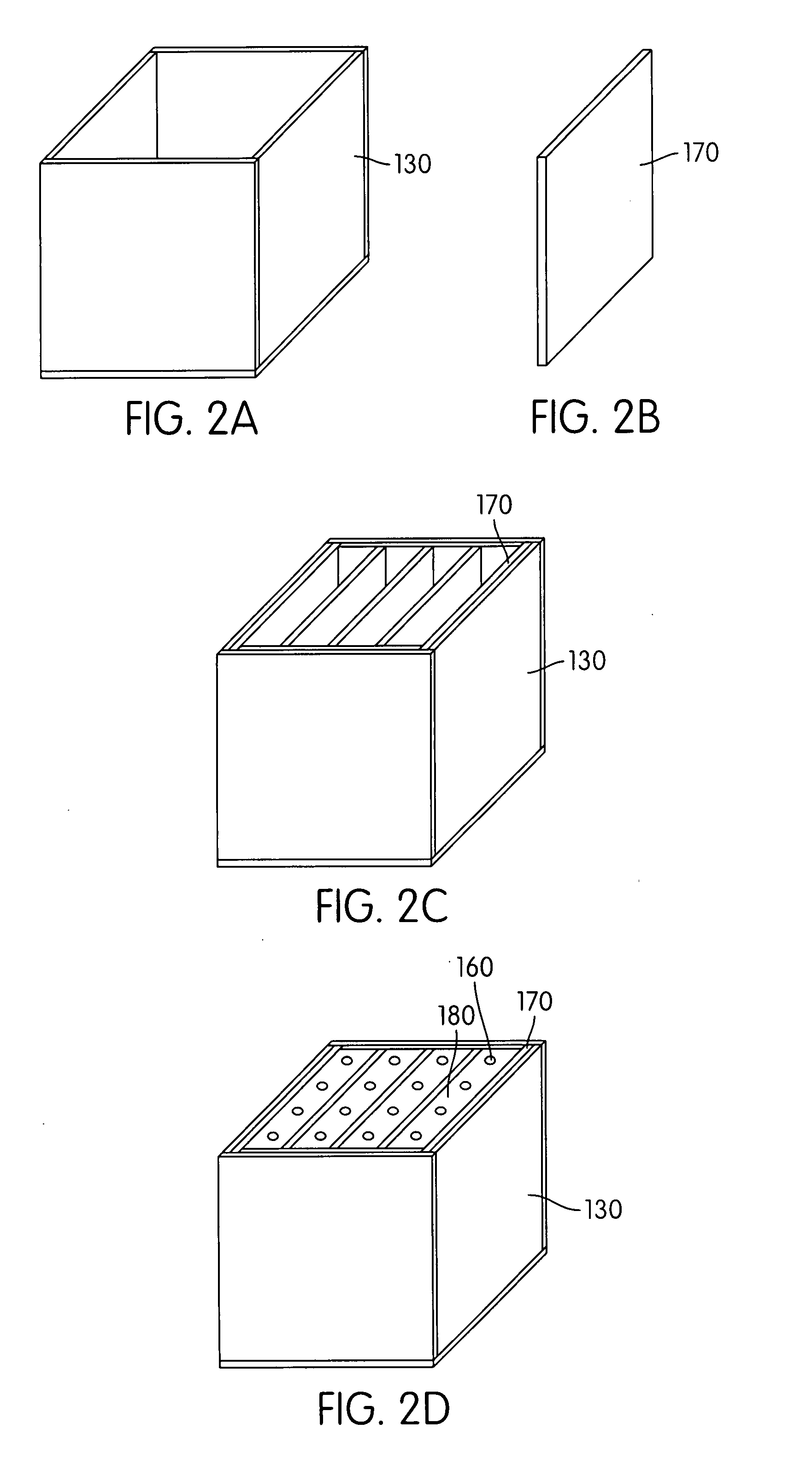Hydrogen-generating solid fuel cartridge
a solid fuel cartridge and liquid hydrogen technology, applied in the field of liquid hydrogen-generating solid fuel cartridges, can solve the problems of difficult reaction to continue, low deliverable energy density of liquid hydrogen or high-pressure hydrogen gas, stringent storage material requirements, etc., and achieve the effect of reducing the diffusion barrier
- Summary
- Abstract
- Description
- Claims
- Application Information
AI Technical Summary
Benefits of technology
Problems solved by technology
Method used
Image
Examples
example 1
[0060] The results of the experiment when the hydrogen-generating solid fuel is sodium borohydride NaBH4 and the catalyst is 20 wt % RuCl3 is shown in FIG. 8. There are three curves in the graph. The actual hydrogen generation rate, measured using the mass flow meter, is plotted on the graph. The theoretical hydrogen generation rate, a calculation based on the water delivery rate and equation (1) is also plotted on the graph for comparison. The third curve on the graph is the hydrogen generation rate that would be required to power a typical laptop computer. Although an excess of water was required above that which the fuel cell generated, the results indicate that hydrogen generation rate met the power requirements of the laptop.
example 2
[0061] The results of the experiment when the hydrogen-generating solid fuel is sodium borohydride NaBH4 and the catalyst is 20 wt % CoBr2 is shown in FIG. 9. This experiment was performed in a slightly different manner, in that the water delivery rate to the fuel cell was changed twice (the first time at about 2500 seconds into the experiment; the second time at about 8000 seconds). The decrease in the hydrogen generation rate corresponding with the decrease in the water delivery rate clearly shows that the test cell is functioning properly. Furthermore, even though the water delivery rate was decreased, at no time did the rate of hydrogen generation fall below that required by the fuel cell to power a laptop.
example 3
[0062] The results of the experiment when the hydrogen-generating solid fuel is sodium borohydride NaBH4 and the catalyst is 20 wt % FeCl2 is shown in FIG. 10. The choice of such a catalyst has advantages in that it is relatively inexpensive, and hence such hydrogen-generating solid fuel cartridges containing FeCl2 may be economically disposable (e.g., a “throwaway” item).
PUM
 Login to View More
Login to View More Abstract
Description
Claims
Application Information
 Login to View More
Login to View More - R&D
- Intellectual Property
- Life Sciences
- Materials
- Tech Scout
- Unparalleled Data Quality
- Higher Quality Content
- 60% Fewer Hallucinations
Browse by: Latest US Patents, China's latest patents, Technical Efficacy Thesaurus, Application Domain, Technology Topic, Popular Technical Reports.
© 2025 PatSnap. All rights reserved.Legal|Privacy policy|Modern Slavery Act Transparency Statement|Sitemap|About US| Contact US: help@patsnap.com



